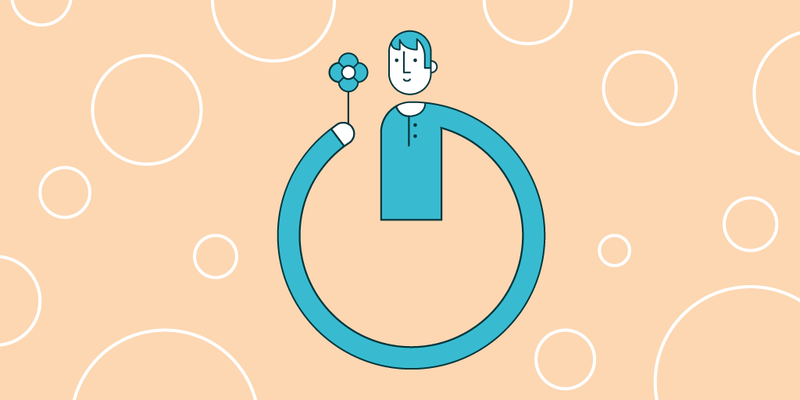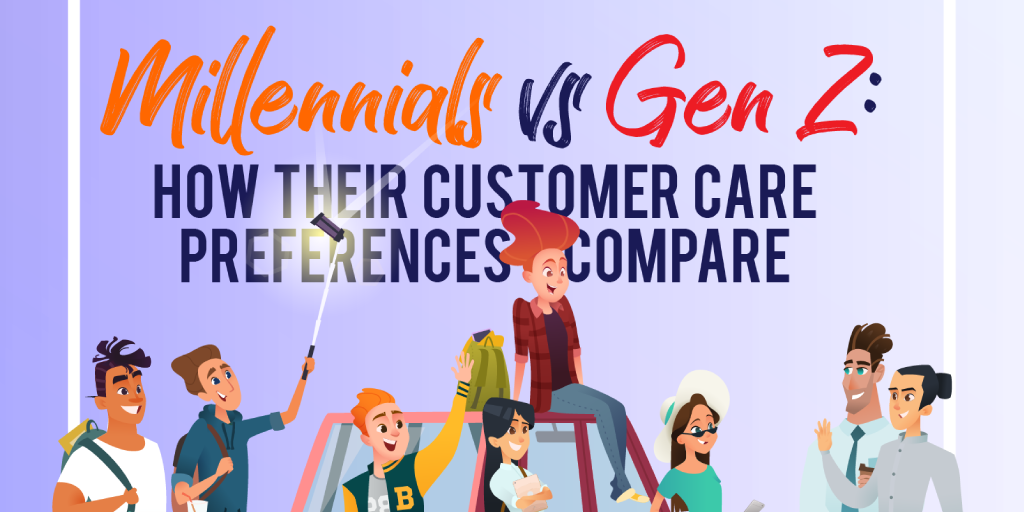A specter is haunting the world — the specter of self-service. With 40% of consumers now preferring self-service to contacting a customer service rep, it seems to be moving at a stunning pace, with no signs of slowing down.
Many companies, on the other hand, are slower on the uptake.
We’re here today to act the part of self-service missionaries and convert the non-believers. (“Hi, do you have a moment to talk about our savior, self-service?”)
What are the five core benefits of self-service? Let’s find out!
Table of contents
- Benefit 1: Improved customer experience
- Benefit 2: Quicker service
- Benefit 3: Reduced costs
- Benefit 4: Less stress
- Benefit 5: Consumer data
1. Improved customer experience

“A self-service solution doesn’t mean you don’t offer customer service. On the contrary, self-service is a way to enhance customer service.” (Shep Hyken)
(This is how you know the article is classy — when it opens with a quote.)
Let’s kick off the show by talking about customer experience. And yes, we really enjoy talking about customer experience.
One of the main benefits of self-service is that it boots customer experience. The reason is simple: at the core of it, customers know what they are looking for. When they can get from point A to point B without jumping through too many hoops, their well-being and mindset improve greatly.
With self-service, there is less frustration that comes when human factor is part of the equation. In fact, by 2020, 85% of all customers may end up not interacting with a human agent at all.
The old adage is true: If you want it done right, do it yourself.
2. Quicker service

No matter which “What are the most important attributes of good service?” poll you take, the usual suspects there are friendliness of staff, clear communication, consistency, transparency — all rated in high 80s. The top place, however, is almost invariably taken by “fast response time”.
Today’s economy regards personal time as a valuable commodity, one that consumers are really stingy with. This “need for speed” is consistent across all of the interaction channels, be it phone, social media, email, or face-to-face conversations.
In an effort to one up each other in terms of speed of service, companies engage in a race that would’ve made the arms race apologists blush. Just like Cold War, though, this ends in a waste of resources that could’ve gone someplace more deserving.
The answer lies not in investing more and more resources in service staff, but in concentrating on centralized self-service solution. Since customers are, most of the time, better judges of what they want at the moment, this allows for a more streamlined process.
3. Reduced costs

Your financial advisors would love this next bit: Self-service results in reduced operational and infrastructure costs.
Why? Because you’re concentrating on self-service tools and there is not much need for extra resources (people, finances, maintenance, etc.) Instead of hiring an entire platoon of additional customer service reps, all you need is to invest in self-service.
What’s more is that self-service is part of the collaborative economy.
The collaborative economy, also known as the sharing economy, describes the situation where consumers rely on and support each other to meet their needs. The participants of the collaborative economy seek to empower individuals with information concerning the quality and troubleshooting of goods or services.
(Think of it as a walking, talking FAQ section.)
When consumers use self-service options, be it online or in a physical location, they gain first-hand experience and knowledge. As a result, they might help out their fellow customer in need.
Think it’s too far-fetched? 48% of consumers would like to receive help from other consumers — and this doesn’t even include asking for feedback or product/service-related questions.
By enabling self-service options, you’re helping your customers help not only themselves but other customers, too.
Welcome to the collaborative economy. Population: every customer ever.
4. Less stress

Shopping can be a pretty stressful activity, but it’s stressful for both parties — customers and service staff. We’ve covered how self-service is more convenient for customers, but what about employees?
Trick question. Obviously, no sane employee would ever say “no” to an opportunity to kick back and not worry about every single thing a customer does.
Self-service helps remove the burden off held desk staff’s shoulders. This is true for customer support, where self-help resources save time for customers and clerks alike, but it also holds true in other areas.
When it comes to queue management, handing the proverbial keys over to customers proves to be, again, a better choice. The clerks now don’t need to constantly oversee the sign-in process and can concentrate on more demanding tasks.
Your customers gleefully handle what you considered to be the boring part of your job, and you can instead put your efforts into making the service more personal and enjoyable. Sounds almost too good to be true; there must be a downside, right?
(Spoiler: there is none.)
5. Consumer data

This particular benefit holds more water for self-service kiosks rather than self-help resources. When customer use kiosks, they oftentimes have to enter their own information. This could be their name, phone, email, reason of visit, etc.
The point is, this is information that marketers consider valuable. When coupled with the customer’s history of interactions (including, but not limited to, purchases), this can help provide far superior, more personal service than what is possible otherwise.
The trick, of course, is not to be Mark Zuckerberg about it. If you ask people to provide data so that you could better service them, most would. In fact, 62% of customers want companies to use their data to make the buying process faster and more convenient.
And to answer the obvious “why?”, here’s some more stats: Personalized offers are on the mind of 48% of customers.
Self-service and personalized service may not be an obvious connection, but killing two birds with one stone is how users of Qminder do it. When visitors sign in at the entrance using the Qminder iPad solution, they enter all the data that can later be used to better service them.
It sounds simple on paper, but it’s even simpler in real life. Check Qminder’s case studies to learn about ways to take advantage of self-service.
Not investing in self-service is not only a, pardon the pun, disservice to your customers. It’s a competitive disadvantage.
That’s one step above just shooting yourself in the foot — you’re handing your leaner, meaner competitors a shotgun so that they could do that for you. (See, even when it comes to the matters of foot-shooting, self-service is a clearly better option.)
Providing self-service doesn’t mean that you essentially stop servicing. You are actually enhancing the overall experience and making your customers know that you trust them enough to help themselves.






